TEXT AND PHOTOGRAPHS BY RIYA LOHIA
Tinsukia, Assam
My grandmother reminisces about things and places in her past, leaving which behind was not always her choice, but a necessity. She puts a lot of care into preserving its remains, which carry within them different parts of her life, recollecting and making space for them in her present life. I share this affinity with her; her cherished collection of the material and the intangible provides a possibility for me to connect with the not known and long gone. Thus, when I decided to write about the pair of beaded dogs which has decorated several houses since it was first meticulously crafted by her as a maiden, I expected eager participation. However, every time I tried to learn more about the pieces, there was an incomprehensible reluctance in her demeanour. A wall emerged in her that turned her from being a person I have known my whole life, my dadima, to someone whose history remained obscure to me.
Usually, after the emotional utterance of, ‘Ye toh bohot purane hain’, these are very old, there was something impenetrable about her attitude that made it difficult to ask her more. She insisted that these are things from a bygone era. She said there are too many years in between that have buried those young memories somewhere, recalling which is a hassle now. It is interesting how my otherwise reminiscent grandma surrendered before her waning memory. There is a sense of regret in her for having forgotten what could perhaps have been remembered for longer. Upon my questioning her what it was like then, she said, “Back then we weren’t taught to think about things, we were taught to do household chores – we were made to cook, clean and serve. I had hoped that my questions would let that wall crumble bit by bit; that would take time, but she did permit me to peep a little.
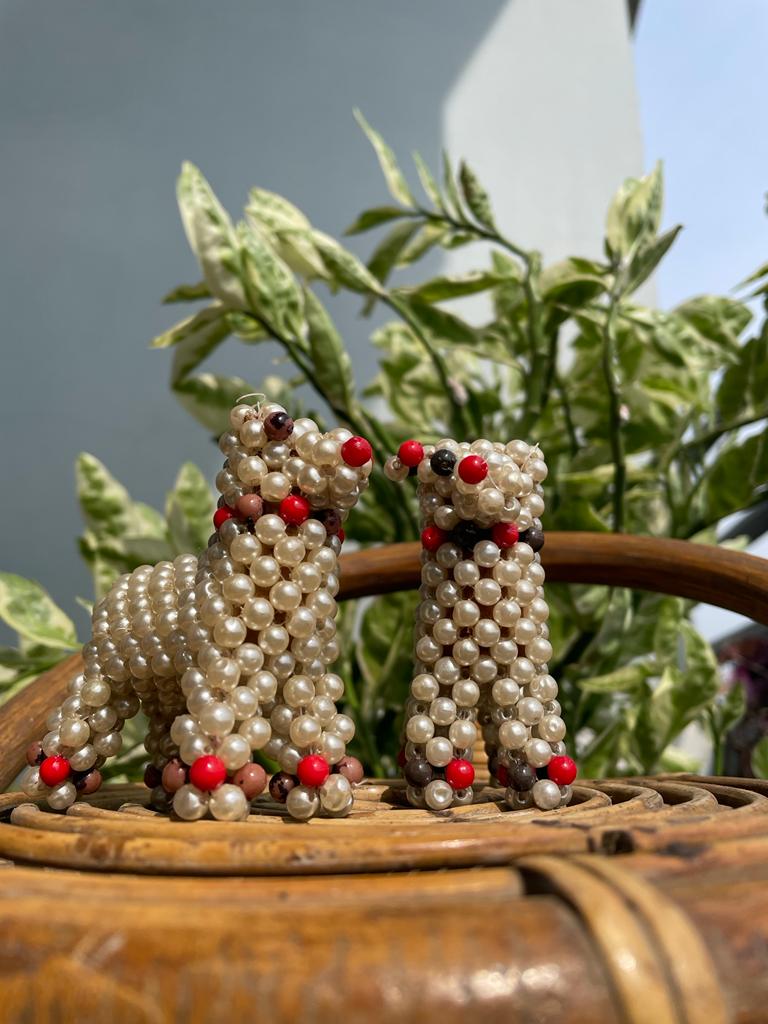
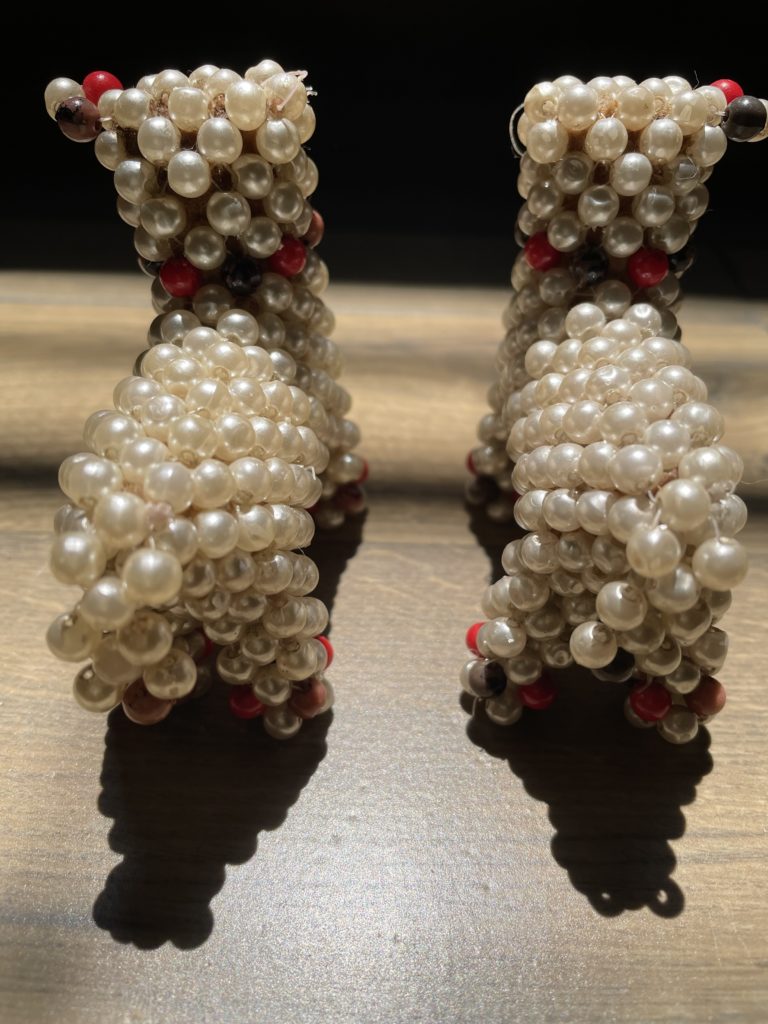
These beaded dogs were made in my grandmother’s natal home in Chabua, a small town in upper Assam, sometime in the late 1960s, most certainly before 1968, the year my grandmother, Shushila Devi Lohia, got married. She said, “In those days it was very common for women to learn any skill that was in ‘chalan’ or in trend for them to learn. Likewise, netting beads to make dogs, rabbits, fancy purses or flowers happened to be in trend, so my cousin’s mother, my Bua taught me along with some other young girls in the family.”
I could see a group of young girls sitting close in a circle, dadima being one of them, with their skilled tutor on the floor in the hall of her house, with golden beams clearing a space for them. They used plastic strings to connect the pearl-like polished beads in a mesh that covered a cotton ball to make the main body. Then, with the use of coloured beads for details – black was used for the eyes, red for the snout and a mix of both for the collar, ears, and feet – the pieces are provided with their final look. The precision with which they are sewn provides both the pieces with an identical posture. The spaces between the joints provide them scope for movement – one could easily make its legs and head move. Some eyes searched for the right beads while others measured the strings. It was a collaborative effort, and in these groups were shared stories, anecdotes, and jokes for giggling, perhaps even life lessons, all of which, as well as the skills of the craft, have been wiped out by time.
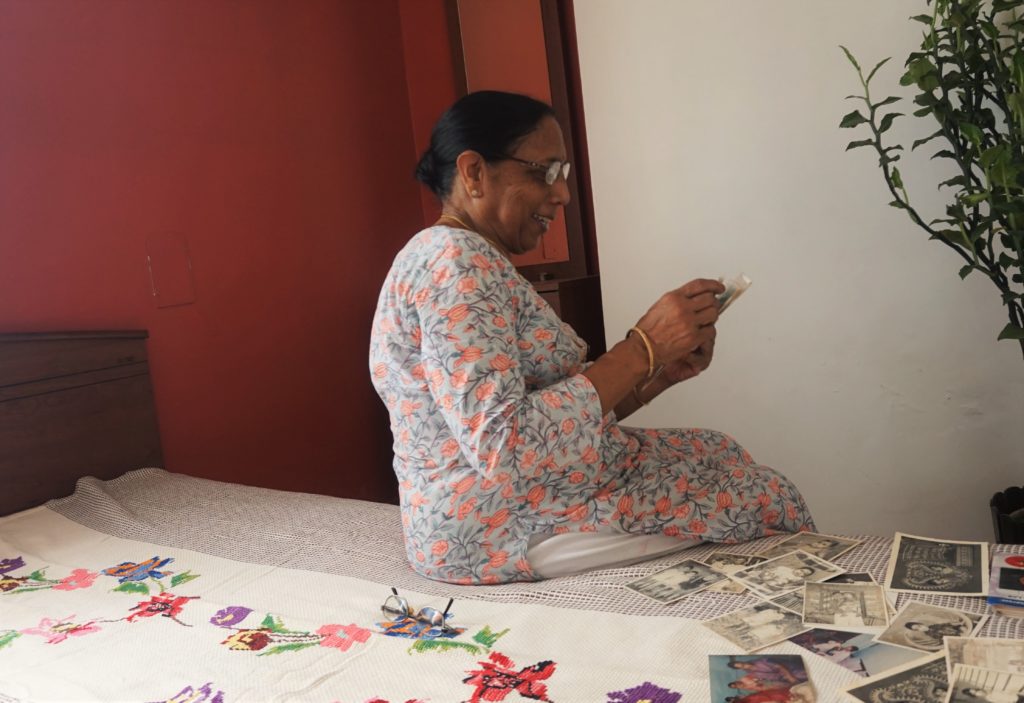
Time has also scraped the paint off a few beads, particularly the black ones, revealing the chocolate brown of the surface. The polish of most of the beads, though, remains lustrous. The polish of most of the beads, though, remains lustrous. In their years of togetherness, both the dogs have lost an ear each, and one of them has lost a black bead that made its eye. The cotton roll used to help them attain a structure shows, upon close inspection, markers of age with its yellow colour like the foxing of a bright paper.
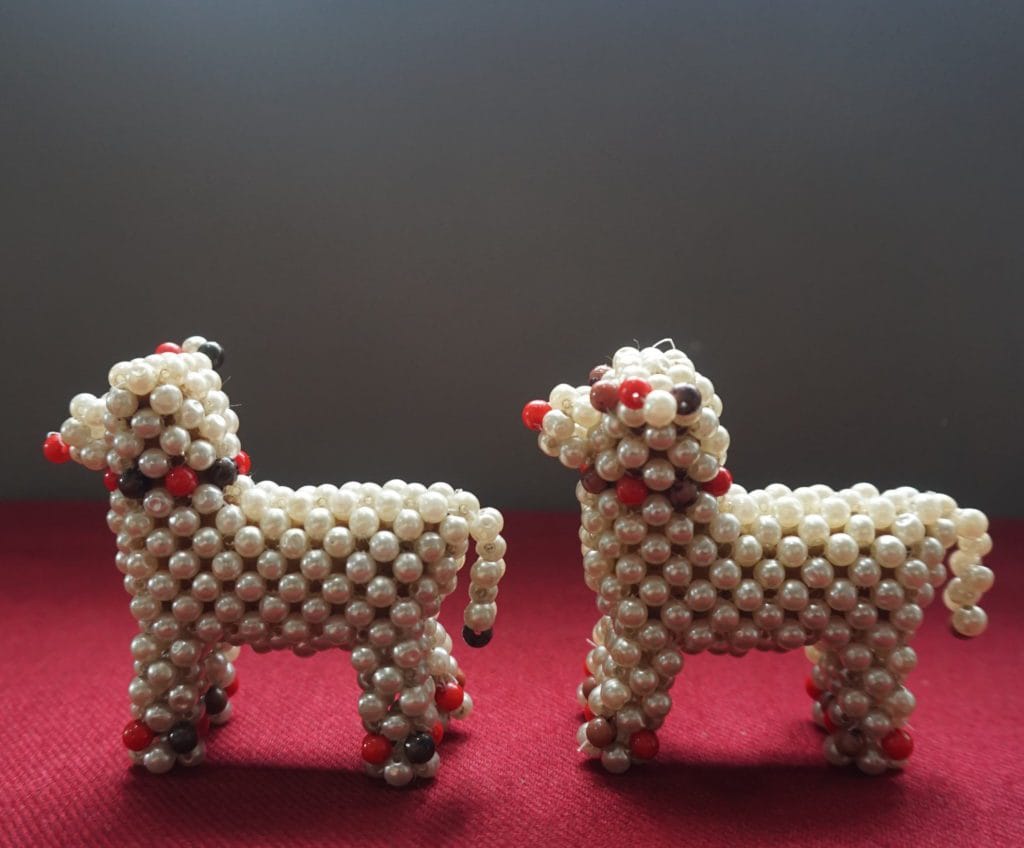
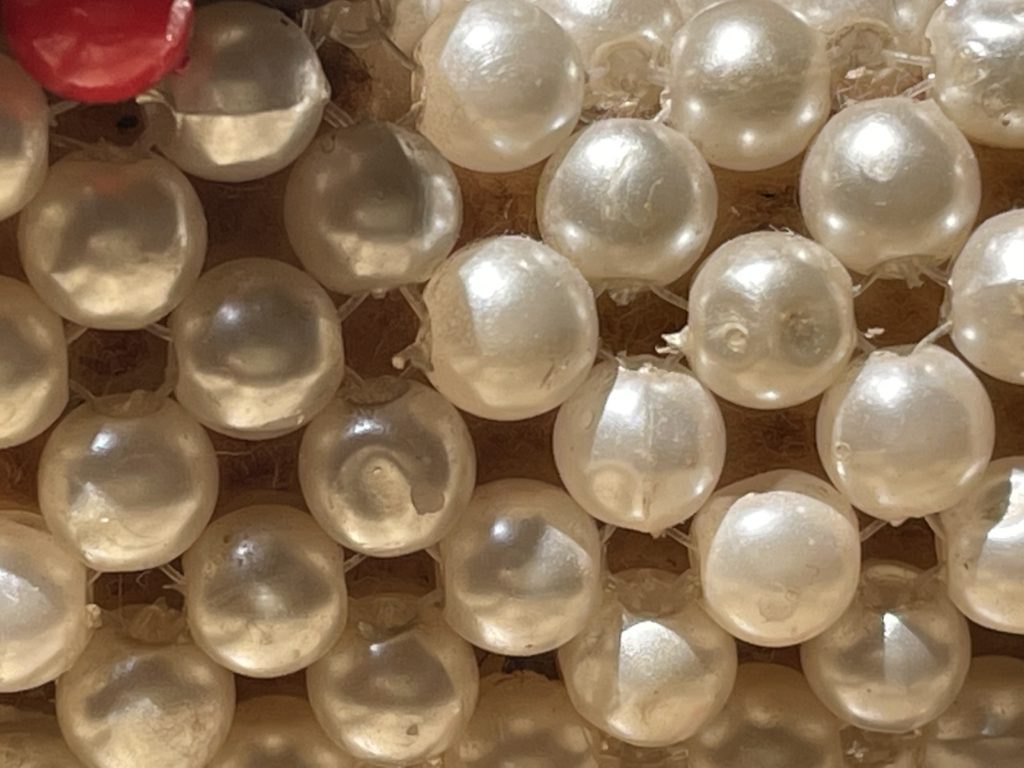
I had first seen this pair in my old house in Dinjan, a remote tea-growing area in upper Assam, in a showcase, amidst other collectibles, souvenirs and show pieces. However, neither was this its first home – it had first decorated my grandmother’s father in law’s house who was a migrant from Rajasthan – nor was it the place where I got intrigued by them. As a child, I had falsely come to believe that only a few people and places had a claim over history, and my place wasn’t among them. There was a gulf between the history I read in my textbooks and my experiences and their lineage. Owing to negligible representation, I didn’t think that anything note-worthy had happened where I was living. I desperately looked for ways to associate myself with those recorded narratives by means of stories and objects to bridge my personal history with the collective one. I learned that we had a few things from the colonial period in our house – a sword and some iron drums and grills. I had clung to these objects and their stories. They reassured my eleven years old self and added value to her experiences. A decade later, when I first learned about Materiality Studies this memory was validated. It was only after the gradual unlearning of these early acquired notions that I began to see things differently; the pair of beaded dogs finally caught my eye at my parents’ home- its current location, where I requested the owner, my dadima, if I could take care of them from now on. Unlike before, I decided to focus on the ordinary in everyday lives, which was neither a part of mainstream history nor trying to claim a share in it, and here, the beaded dogs stood out.
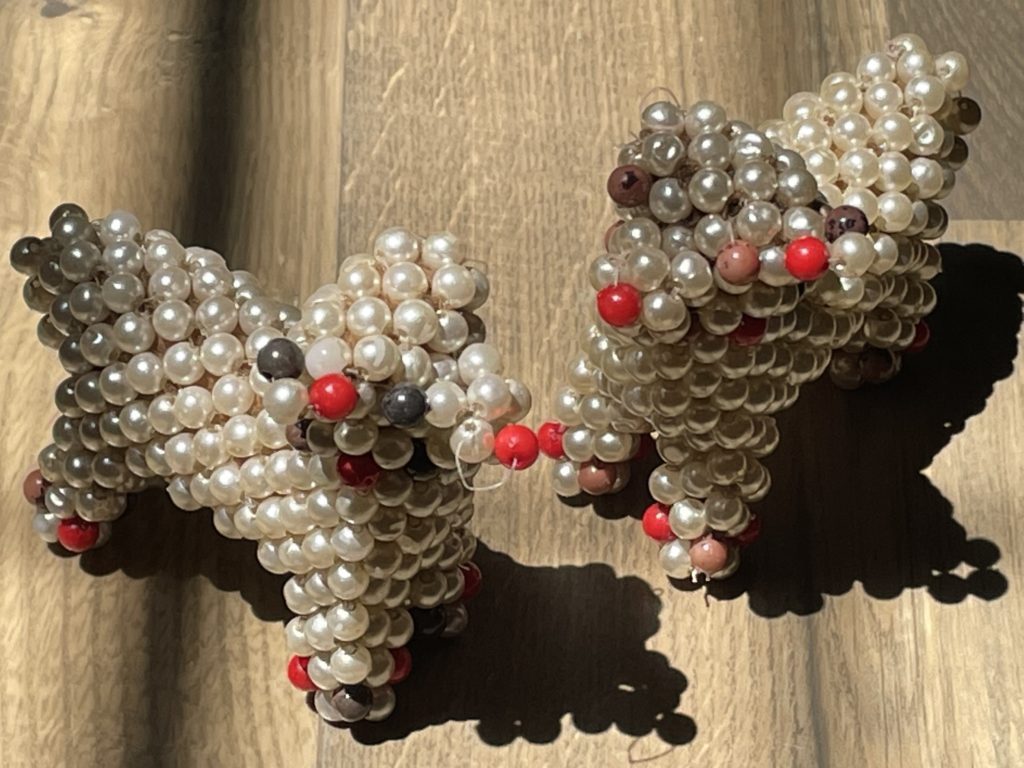
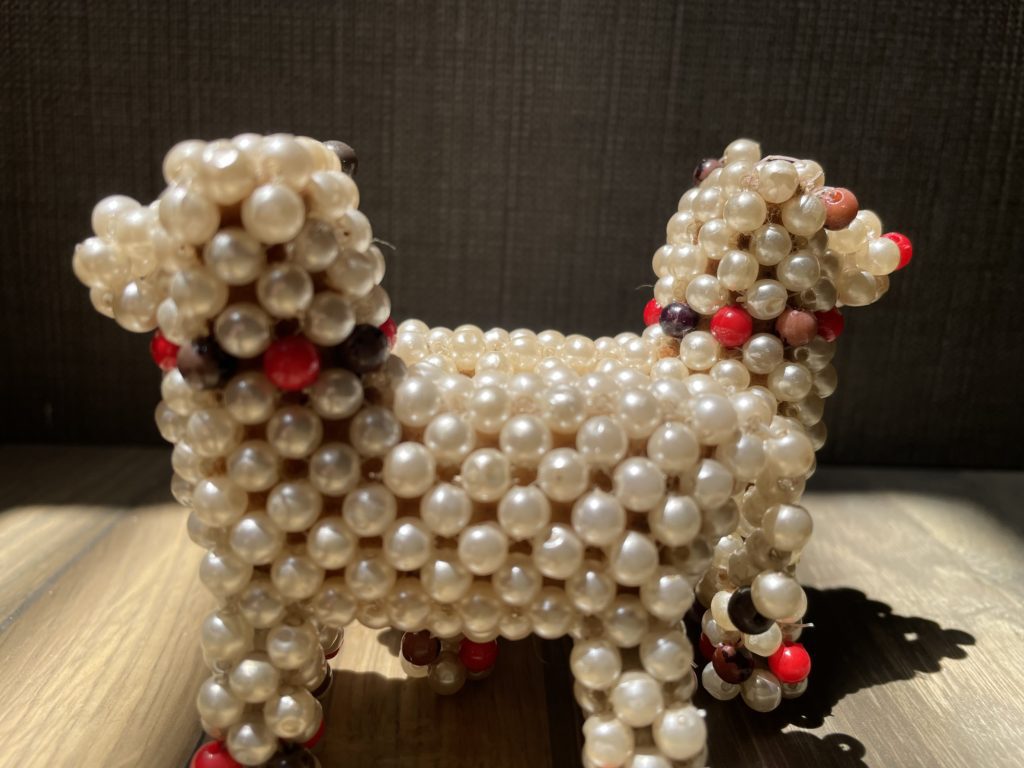
These are toy dogs, but they were never played with- neither by my grandmother nor by anyone else in her family. They have lain stationary and mostly unnoticed. Handcrafting these pieces wasn’t special for her but utterly ordinary; another instance in a sequence of things she did to fulfil what was expected of her and be a dutiful daughter. Perhaps her reluctance to remember, her silence, was because of how she saw these memories. She didn’t assign any value to them. She didn’t choose to bead the dogs, but what amuses her is that she didn’t even think about questions of choice and interest. She told me how her grandmother would repeatedly emphasize the need to learn embroidery and tell her how it was an essential skill that all girls must learn; it would help them after they married. Dadima mockingly added, ‘What did they help me with?!’
I asked other women who had grown up in that decade if they recognized this piece of handicraft, or had ever crafted or had memories associated with similar pieces of work, and to my relief they did. One of our neighbours, Santosh Goyal, had learned the same craft in Hisar, a city in Haryana far away from the small town where my grandmother learned it. She exactly reproduced my grandmother’s words, saying that these were trends that women followed, but unlike her, she looked back quite fondly. With pride in her voice, she named the women she knew who had done this work- her sisters and cousins. The sight of the beaded dogs became a passage for her to an earlier time, when she had learned and practiced such crafts, the products of which would accompany her after her marriage to her husband’s house in a faraway land and disappear within the folds of time. She was quick to add that in those days they had a separate period in school where they would learn such skills. Thus, the memories that came forth were not particularly about handcrafting using beads but about the time when she had learned it. Amusingly, she recalled an anecdote where her teacher scolded her for taking a long thread to put in the needle, which meant extending her arm wide, by saying, “Do you plan to hurt your seatmate?!” She couldn’t contain her joy as she recounted this esoteric joke.
My grandmother had learned this craft within her home, but she too pointed out that skills like these were taught in schools back then. A particular period was assigned for the girls in the class, when they were taught stitching, embroidery, and anything else that was then in vogue for young women. There were booklets available that came with step-by-step instructions on how to make these things, which would most probably be packed in these young women’s trousseau and decorate the houses of their husbands.
Repeated accounts from women stated, a couple of sentences into the conversation, that skills of this kind were taught in schools back then. These women were all over 65 and came from middle and upper middle class Marwari diasporic families but were raised in different places. Interestingly, none of them confirmed whether this skill, moti pirona (stringing beads), as it is called in common parlance, in particular was taught at school or not. It has been difficult to find any documentary evidence to suggest that it was and it seems somewhat unlikely that despite not being mentioned in the curriculum, the skill of beading would still have been taught by teachers in sewing and knitting classes. There is a possibility of inquiry as to why these women made this connection. Perhaps, they have the experience of learning this handicraft and that of needlework taught in school stored together in their memory. After all, both these skills were considered feminine and the reason for teaching each to a young woman was the same – to prepare her to be an ideal woman or etymologically, ‘wife of man’. Learning how the pieces tied various women together in different yet shared ways, I felt the need to situate the pair of beaded dogs in a wider history.
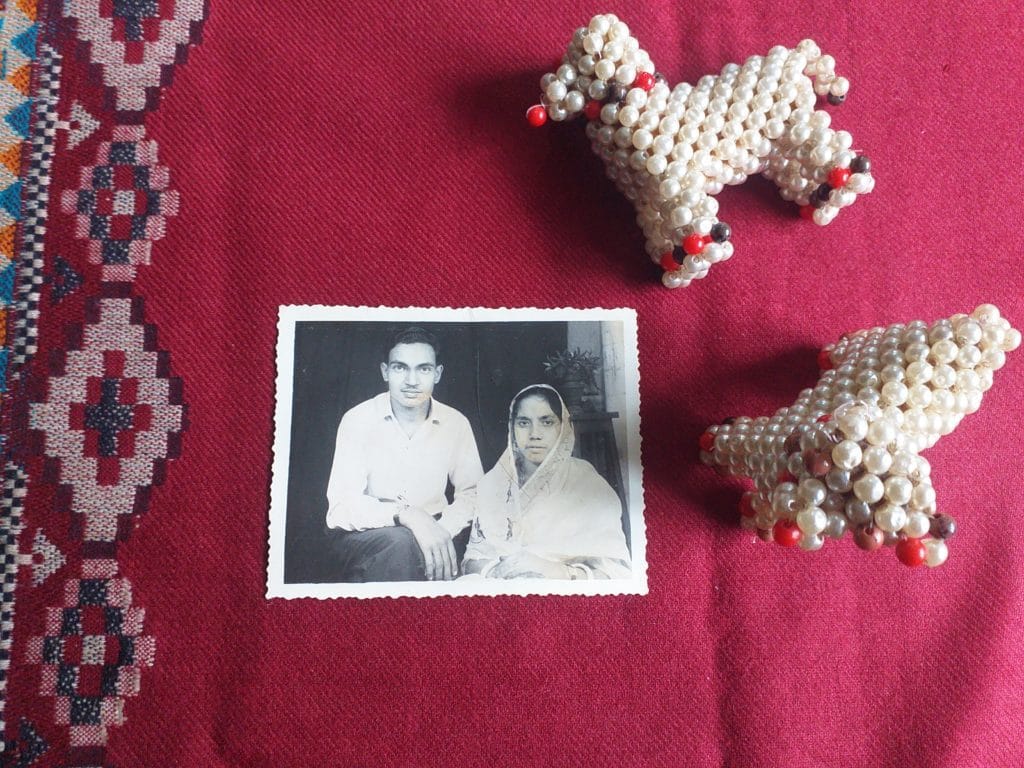
It was upon the recommendation of the Indian Education Commission, 18821 that, for the first time, subjects considered suitable to the requirements of girls were included in the curriculum. The resulting curriculum was made easier for girls in comparison with boys. Courses like needlework were introduced, replacing Euclid and Mensuration for girls. It was increasingly felt then that the curriculum for girls should be differentiated from that of the boys. By 1927, the curriculum for needlework was expanded into a separate three-tier diploma examination.2 Girls were encouraged to take these exams and use these skills in day-to-day life. It was only after the establishment of the National Council of Women in 1958, chaired by Durgabai Deshmukh, that these ideas were challenged, albeit only to an extent. In 1961, the National Council for Women’s Education set up the Hansa Mehta Committee, which examined and recommended changes to the present curriculum of schools so that they were better equipped in dealing with what it considered to be the societal needs of women and training them accordingly for their lives. It recognised that the difference in the respective curricula for boys and for girls was premised on the conservative view which insisted on a separation between ‘manly’ and ‘womanly’ activities’ and therefore prescribed a common curriculum with simple needlecraft and cooking for all in middle school to counteract this view.3 In spite of these steps the committee maintained the view that, “the education of women should be so planned as to enable them to follow a career of their choice without, in any way, neglecting their responsibilities for child-rearing and home-making.”4 Moreover, in implementation the recommendations of the committee weren’t followed through completely. As also implied in the interviews with the women, these activities were exclusive to girls.
Much like the beaded dogs, this piece has been sewn together with separately woven stories. It is a collation of fragments, just like the memories surrounding them. Asking my grandmother questions was difficult; the wall that emerged within her was discouraging, and trying to ask more felt like disrespecting her boundaries. She wasn’t very comfortable sharing things to which she didn’t assign much value. When I first informed her that I was writing an account of these pieces, she was nonplussed. She understands why one would value this old hand-crafted pair – she does it too, but a sustained curiosity about it and her life, parts of which will take the form of writing, baffles her. She has often called me an idiot for writing about this pair of dogs, although with a glint of veiled excitement, unsure about the outcome.
My reaction to her response is burdened with details of times past, which has made it hard to articulate it. She had shared thoughts about what could have been if she had had a chance to get educated and become someone of her choice, and the purpose of her life had not been suppressed by the duties that came with being a woman. It was painful to see her think, even if occasionally, that her life had been wasted. Her feelings of unworthiness do not exist in isolation but are constantly dictated by a society which attempts to diminish the work a woman does and limits its scope. Her inability to assign significance to her life is not very different from the inability of my younger self to see historical value in the place where I lived – the kind of value that comes from being the subject of study and being recorded. I have wondered whether this piece of writing will affect the way she sees herself and her life, and if it at all it would compel her to rethink it.
Notes:
- Bina Lahkar, Development in Women Education, Study of Assam (1874-1974), (Guwahati: Omsons Publication, 1987) 52. The year of the Commission is not clearly mentioned in the text however it seems likely that it is referring to the Hunter Commission of 1882.
- Lahkar, Development in Women Education, Study of Assam (1874-1974), 81.
- A.R. Kamat, ‘Women’s Education and Social Change in India,’ Social Scientist, Vol. 5, No. 1 (August, 1976): 14.
- Quoted in Annie Dimple Castelino, Shashkala A., Gender, School and Society: Self Learning Material for B.Ed. Programme, (Mangalagangothri: Mangalore University, 2018) 53.
